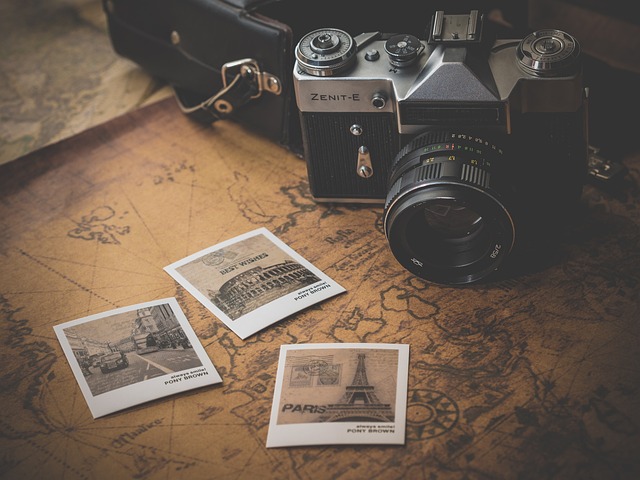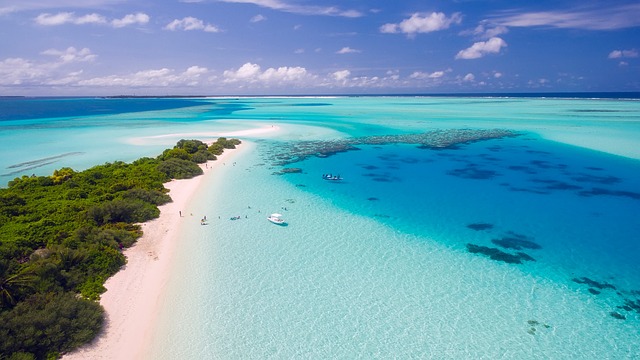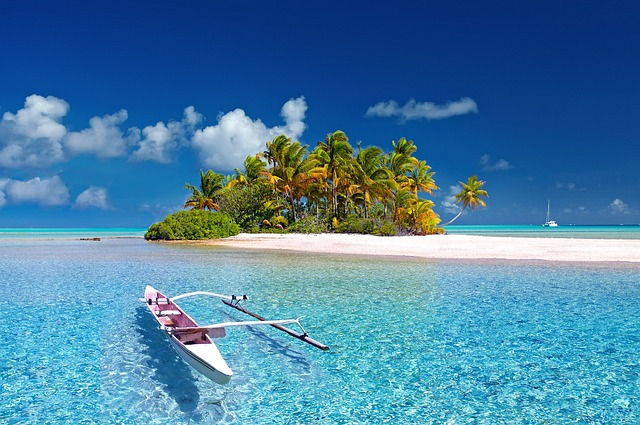You’ve been saving a lot, and now you have a sizable sum of money to spend on international trip. But with your frequent international moves, how in the world do you handle your finances? How can you securely and affordably get it? What happens if an error occurs? How can you avoid running out of money in the middle of nowhere?
Using guidance from other seasoned travelers worldwide as well as our own nine years of travel experience, we’ve put up this comprehensive guide on managing money while traveling to assist with these issues.

Create a Bank Account with Minimal or No Foreign Transaction Fees
When traveling, the primary method of accessing your finances is via debit card withdrawals from ATMs. ATMs are widely distributed and provide a convenient means of taking out cash just when needed, eliminating the need to carry large sums of cash with you.
The issue is that a lot of banks have exorbitant costs for international withdrawals. It might save you a ton of money to review your bank’s fees and switch to a different account if they are excessive.
For instance, the UK’s Lloyds TSB bank levies a standard 2.99% foreign exchange cost in addition to a 1.5% cash withdrawal fee, with a minimum charge of £2. So it will cost you £8.98 to withdraw £200! That would cover a night at a hotel with a pool in Thailand or a day’s budget in India! If you want to avoid giving away your hard-earned vacation money to the bank, you need to look for an alternative.
These are a few of the top bank accounts we’ve found for travelers.
Globally
With an HSBC bank account, you may make free withdrawals from any of their ATMs worldwide. It’s wise to consider your options since, in the event that you are unable to locate an HSBC ATM (which is not always the case), you will be responsible for paying their exorbitant fees to use other ATMs.
A Transferwise Borderless multi-currency bank account may be opened by people of most nations. We use it to receive payments in a number of currencies, including US dollars, euros, and Australian dollars. We may also take out up to £200 every month for free, or use the debit card to make free online or in-store purchases.
For more information, visit our Transferwise Borderless review. Their rates for transferring between various currencies are far cheaper than those of regular banks.
For Citizens of the United Kingdom
Check out Money Saving Expert’s very helpful Cheap Travel Money guide for the most recent details on the best credit cards to use overseas.
The finest debit card is offered by Starling Bank, a mobile-only bank account that offers 0.5% interest on your balance in addition to no international transaction costs. We appreciate the real-time alerts on the app when we use the card, and it was much faster to set up than a traditional bank account. It’s also wonderful for security. It’s the greatest choice we could find for taking out cash overseas.
We use the Halifax Clarity credit card, which is now the greatest credit card available. Although there are no fees associated with foreign currency or cash withdrawals, you will still be responsible for interest on the amount you take since it is a credit card. We avoided the Halifax interest costs before we began using Starling to make cash withdrawals by paying off the remaining amount as quickly as feasible. Even better, you could load the card with cash beforehand.
Additionally, there are no foreign currency costs associated with our Nationwide Select credit card.
For Citizens of the US
Travelers love the Charles Schwab High Yield Investor Checking Account because it has no overseas use fees and reimburses any expenses incurred from using other ATMs.
Additionally, there are no international transaction fees with Capital One credit cards.
For Citizens of Australia
Create an online banking account.
Make sure online banking is an option when selecting a bank account since this is how you will handle your account while traveling, tracking your expenses and making deposits and withdrawals.

In the UK, several banks have recently implemented card readers, which are necessary to complete certain online banking operations. Although they are cumbersome to transport, they do provide a layer of security, so since you are forced to use them anyhow, make sure you bring yours.
Connect Your Savings to Your Current Account.
The majority of your funds should be kept in a savings account, with occasional transfers to your new traveler-friendly current/checking account. In addition to earning interest on your savings, this makes your money safer since it’s spread out among many locations and you wouldn’t lose it all if someone obtained access to your account.
Even with the current low interest rates, this may still add up to a sizable sum. View Money Saving Expert’s list of the top savings accounts in the UK. An ISA allows you to save up to £20,000 tax-free. Refer to Get Rich Slowly’s information on high return savings accounts in the United States.
Using online banking is the most convenient method to move money from your savings to your current account. You may deposit a certain amount of money on a monthly basis by setting up a recurring transfer, or you can do it whenever you need to. Before you depart the nation, verify sure the transaction procedure is functioning properly by testing it.
Accept Several Credit and Debit Cards
It is advised that you bring two credit cards and two debit cards. A backup debit card is crucial since original debit cards may be lost, stolen, devoured by ATMs, banned by banks, and interfere with your ability to access funds.
Select your primary bank account from the list of traveler-friendly accounts above, and keep a backup account as well. This may be your current bank; because you’ll only use it in an emergency, it doesn’t really matter if they have exorbitant foreign costs.
Take out a card for each of you if you and your partner have a joint account. When we’ve had to deactivate our card twice—once due to pickpocketing, and the second time because money was removed from our account and our card information were compromised—this has been quite helpful (fortunately the bank reimbursed us the money). We could keep using our backup card to access our money normally.
Credit cards are useful to have on hand even if you don’t intend to use them; you’ll need one in order to rent a vehicle. Some individuals also use credit cards to earn frequent flyer miles, although this only makes sense in the United States, where credit card issuers provide significant points just for registering.
ATM accessibility
Most areas in the globe have ATMs, but if you’re heading somewhere isolated, make sure before you leave. For instance, there were none in the whole nation when we visited Myanmar/Burma in 2012 (there are now many), so we had to bring all of our cash in brand-new US dollar notes. In several regions of the globe, there may not be as many ATMs in rural areas; thus, you’ll need to restock on cash at the closest metropolis.
It’s important to remember that not all cards are accepted everywhere. We have only seen a cash machine that does not take Visa once or twice in our nine years of traveling throughout the globe, but it may be wise to have a Mastercard in case of emergencies. Do some study before you visit since it actually depends on the destination.
Obtaining Fresh Cards Outside of the Country
Obtaining fresh cards may be a problem since we are always traveling. When they are about to expire, we purchase fresh ones before visiting the UK and pick them up there (we use Simon’s mother’s address). In the event that this isn’t feasible, we have had cards delivered to us in Thailand by regular mail, wrapped in chocolate bars (extra chocolate!), and we have had no issues.
Examine Other Payment Options
Using a prepaid card, which you load with cash and use like a debit card, is an alternative to using a debit card. Although we haven’t used one, our friends who did on their round-the-world journey highly suggested it. We examined the rates and decided it wasn’t worth the trouble since the costs weren’t any lower than those of our bank.
You might also store some money in your Paypal account as an additional backup. According to Wandering Earl, he usually uses Paypal to pay for hotels and flights on websites like Hotwire.com, so you can always use it in an emergency.

Grab Some Cash
You should bring some cash. Though we don’t use it often, having cash on hand is crucial. We recently traveled to Mexico and discovered that neither the airport nor the town had functioning ATMs since they had all ran out of money. We paid for the bus at the airport with our dollars, and then we swapped $20 for a cab to our hotel and supper at a location that was next to the bus station. When we had more energy the next day, we went in quest of an ATM that was functional.
The finest alternative and most generally recognized currency is US dollars. You may also bring some euros, which are widely used in nations like Egypt. We just accept a few hundred bucks in various sized notes. Although $100 or $50 bills often provide better exchange rates, you should also bring some smaller notes for gratuities and visa fees (which are sometimes payable in US dollars at the point of entry). Notes should be in decent shape since certain locations might be picky.
It is a good idea to carry a modest supply of emergency cash in your bag in case your main cache is lost.
Traveler’s checks were once a secure backup for us when we traveled, but we no longer bother.
Let Your Bank Know
Inform your bank of your trip plans over the phone before you leave the house, or else they could block your card owing to possible fraud.
Regretfully, informing them may not always be helpful, and your card may still be banned. If so, give them a call, and your card will often be unblocked right soon. We purchase Skype credit and use it for calls as it’s more convenient than looking for a local phone and the international prices are affordable.
Even if you move from paper to electronic bills (which you should do), you still need to provide your bank with an address in your home country when you go on an extended vacation. We make advantage of Simon’s mother’s phone number and address. When they see questionable behavior on our account, they will sometimes phone her. She then forwards the message to us to call them.
Establish a Budget
Make a reasonable budget before you go based on your anticipated spending in each location, plus a healthy contingency for unforeseen expenses.
We have a post on long-term travel budgeting that includes a breakdown of our first round-the-world trip expenses.
You may check in Lonely Planet guidebooks, read our travel budget pieces, or browse the collection of budget topics on Legal Nomads for ideas on how much international travel will cost.
Understand Exchange Rates
Know the conversion rate before you go to a new nation so you can plan how much money to take out (while staying under your bank’s daily withdrawal limit) or what to anticipate from money changers so you don’t get scammed.
I use our own Trail Wallet budget program as well as the xe.com website and iPhone app. Printing off the fxCheatSheets and bringing them along was helpful during the days before digital travel.
Take Out Cash as Soon as You Can
As soon as you go to a new nation, take out a cash withdrawal.
This summer in Italy, we were standing next to a furious American man at the Pisa airport train station who was upset that he was unable to pay for his train ticket with cash or a credit card. His little hissy fit did not impress the woman behind the counter, and he lost his spot in line. Make the ATM your first port of call and never presume you won’t need local currency.
Airports, transportation terminals, and borders all often have ATMs. If not, merely exchange enough cash to get you where you’re going since money exchange offices in these locations often provide very poor exchange rates. Alternatively, arrange for a cab to drop you off at an ATM on route to your hotel.
It’s a good idea to withdraw unevenly so you obtain some smaller notes since large bills are typically difficult to acquire change from, particularly in developing nations. For example, you may withdraw 390 instead of an even 400.
Before you arrive, find out the ATM’s policies since some may charge you costs above the international fees charged by your bank. For instance, we found that Aeon doesn’t charge a fee, although almost all banks in Thailand do. Although they don’t have many branches, the ones we did locate allowed us to save $5 on each purchase. There are no free ATMs in Mexico, but we may reduce the amount we pay by using a few different ones.
Keep a Tab on Your Spending
Costa Rican whitewater kayaking with me
You can confirm that you can afford activities like these by keeping a record of your spending.
You’ve finally hit the road and taken care of your financial issues. How do you avoid running out of money midway through a trip?
It’s critical to monitor your spending and assess how you’re performing in relation to your spending plan. By doing this, you’ll avoid running out of money, worrying all the time about whether you can afford things, and losing out on enjoyable activities. This month, you may confidently book that whitewater rafting excursion if you know you are on a tight budget.
Use online banking to at least monitor your credit card usage and ATM withdrawals; do this at least once a month. This aids in identifying any fraudulent activity. We recently discovered that we had been charged for an ATM transaction for which we had not been reimbursed since the machine was out of cash. Make sure you notify your bank as soon as you become aware of anything similar.
It’s much better to maintain a detailed, category-by-category expenditure log. You’ll be aware of your spending patterns and if you are over or under budget.
Writing down every dollar you spend or attempting to recall everything at the end of the day to put into a spreadsheet may be a hassle. For this reason, we developed the Trail Wallet iPhone app, which enables you to input quantities while you’re out and about in one instant. It supports a number of currencies, indicates if you are over or under budget, and displays a pie chart that reveals which area is depleting your funds.
Preserve Your Money
Making Use of ATMs
Although we try not to carry too much cash on us, we do our best to minimize our expenses by withdrawing the most money possible from ATMs. You should do the following three checks before using an ATM:
- Verify that the card slot itself cannot be removed with ease. Just give it a little twist or jiggle to make sure there isn’t a skimmer attached.
- Verify that no false keypad is present, since they are sometimes used to attempt to get PIN digits.
- Look for any cameras aimed at the keypad from below. For the bank’s security, cameras are often aimed at you, but none should be aiming downward. Once again, their goal is to get your PIN.
When entering your PIN, always make sure to protect your hands. If in doubt, use a different ATM.
On Days of Travel
We always have our cash, passport, and cards with us when we travel. While Simon keeps his money concealed beneath his clothing, I use a tank top from Clever Travel Companion that has pockets hidden.
There are belts that imitate actual belts and include a secret currency pocket, but they can’t hold larger objects. If you wear a belt, this would be a wonderful backup.
In Hotels
The majority of our cash is kept in our bags, which we sometimes use to secure a piece of furniture that cannot be moved with a cable lock or, in more upscale accommodations, the room safe, when we check out for the day.
We withdraw the minimal amount of cash required for the day, and based on our perception of a location’s safety, we may choose to bring just one debit or credit card, or none at all (such as on beach excursions). It is very easy for your wallet to be taken, so never keep all of your cards inside.
See our article on How We Were Robbed and How to Avoid It for further security advice. In the last three years, we had only experienced theft once, during a pickpocketing incident on a bus in Costa Rica. We discussed our errors and the things we did well in the article, which allowed us to lose just $30.



